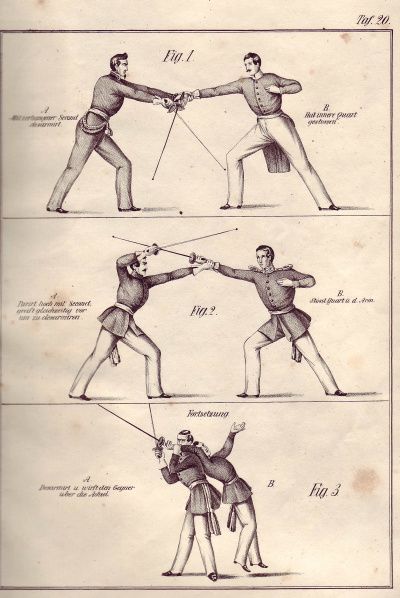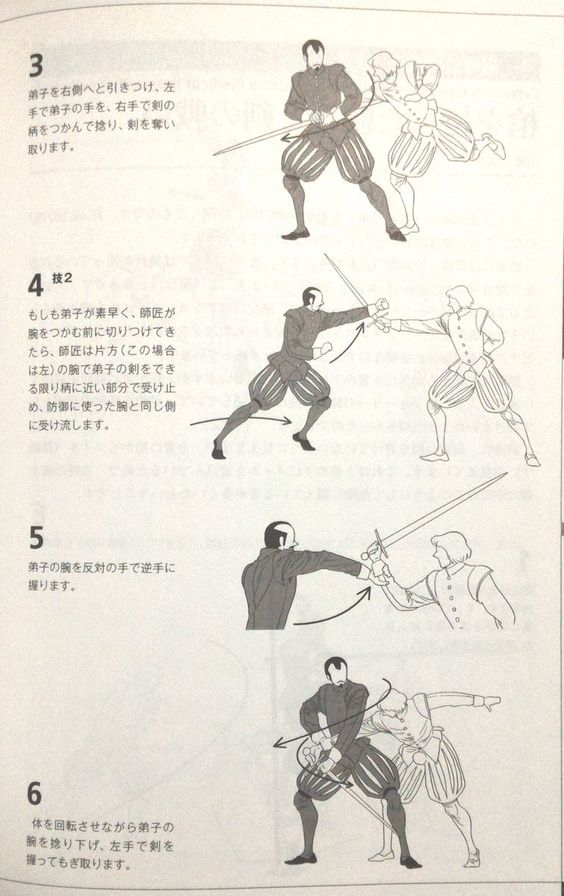Sometimes going full murder hobo just isn’t the way to handle a situation. Maybe you need information about dangers that are ahead, a living witness to clear the party’s name, or maybe helping a cleric regain the favor of his/her god through merciful acts to make up for an earlier session of murder hoboing gone too far.
Whatever the reasons, sometimes the idea of disarming an enemy is preferable to just lobbing a couple of fireballs and calling it a mission well done.
However, disarming is not an especially common action in 5th Edition and guidance on how to do it can be a little bit underwhelming. Can only fighters with the right fighting technique disarm an opponent? Should monks have the ability to disarm because of martial arts training?
Disarm in 5E can be done by any player via opposed Strength or Dexterity check (DM’s choice) according to the books. The DM may make it an Athletics check or customize disarm in additional ways as he/she sees fit for their campaign. Only Battlemaster fighters have specific instructions for disarming an opponent.
We’ll break down the various options for disarming an opponent, when it makes sense to apply each one, and remove the confusion on this once and for all.

Two Common Ways to Disarm
There are two common ways to tackle disarming, as laid out by the rules without any homebrewing or DM intervention. One fully applies, one is kind of a cop out, but if the main point is disarming the enemy then we need to go over every potential option available.
Common Option 1: Battlemaster Fighter Uses His Fighting Maneuver
Most fighters take the Battlemaster style because of the sheer number of fighting maneuvers that it unlocks. One of these is “Disarming Attack” which gives the fighter the ability to spend a superiority die to try to disarm a target that was hit with a melee attack.
This is found in the Player’s Handbook on page 74 and states:
Disarming Attack. When you hit a creature with a weapon attack, you can expend one superiority die to attempt to disarm the target, forcing it to drop one item of your choice that it’s holding. You add the superiority die to the attack’s damage roll, and the target must make a Strength saving throw. On a failed save, it drops the object you choose. The object lands at its feet.
This is pretty simple. It’s a basic strength saving throw (8 + your proficiency bonus + your Strength Modifier) and if the struck enemy fails the item whether a shield, weapon, or item is then dropped at their feet. Easy enough.
Common Option 2: Rogue Uses the Blow Dart w/ Sleep Poison
Yea, not what most people think of disarm, but taking weapons off a sleeping body does get it done. If you’re looking for a fair way to avoid the strength athletics check you know you’re almost certainly going to fail, then going with a blow dart certainly isn’t the worst idea in the world.
The Disarm “Action”
That said, every player has the option for at least attempting to disarm an opponent unless the DM rules otherwise, and that would be a pretty unusual ruling without a very good reason.
Keep in mind that at the end of the day, any disarming action that isn’t directly from a Fighter’s maneuver is an OPTIONAL rule so at the end of the day it is the DM’s call.
However, when looking for how disarming should work, here are all the passages of guidance and best ideas we’ve heard.
How the Book Suggests Handling Disarm Attempts for Non-Fighters
The Dungeon Master’s Guide has a section for Disarm under “optional rule/options” on page 271. The suggested text from the book reads as follows:
A creature can use a weapon attack to knock a weapon or another item from a target’s grasp. The attacker makes an attack roll contested by the target’s Strength (Athletics) check or Dexterity (Acrobatics) check. If the attacker wins the contest, the attack causes no damage or other ill effect, but the defender drops the item.
The attacker has disadvantage on its attack roll if the target is holding the items with two or more hands. The target has advantage on its ability check if it is larger than the attacking creature, or disadvantage if it is smaller.
Dungeon Master’s Guide, p.271
This certainly gives a lot more advice than the “Contests in Combat” section which talks about giving a general framework for these types of unique combat situations but not much else beyond that very general framework you probably would have used anyway during a homebrew version.
This is also a very solid way to do it. I would argue as DM that it’s a Strength check only unless you have a class, feat, or argument that convinces me Dex makes sense. A monk knowing unarmed combat? A barbarian who took Grappler or Tavern Brawler feats? Sure. Those make sense, but otherwise if there’s not any training, I’d say just make it a STR check.
An archer focused ranger is not built to disarm a melee fighter at close combat. That’s why I would add that bit of a caveat, but that’s just my ruling as DM, others may have different opinions on the matter.
Creative 5E DnD Disarm Homebrew Rules for 5E
There’s potential for a lot of fun here, and I thought of this before talking to experienced 3.5 players who informed me that there used to be a variety of additional maneuvers around disarm, tripping, and grappling that opened up an interesting array of possibilities.
One for me is ruling that a critical success adds a d4 of damage, where your method is so forceful it causes at least minimal damage. That was a nat 20 isn’t wasted.
The other is to have disarm/grappling stand-offs, situations that force unarmed combat, or other variations that add a little spice to things. Two monks facing off, for example could have a disarming face-off: rolling three opposing checks each and using ki points and reactions to reverse grips. If you’ve ever seen a really, really good Jujitsu or Judo face-off this concept makes sense.
A really good DM will have a fun time describing the back and forth with each roll and the struggle to get the upper edge between two experienced close combat fighters.
Classes, sub-classes, or builds I would give 5E disarming bonuses to (aka let them use Dex vs Str or give them some form of boost to their efforts)
- Monks
- Players who took the grappler feat
- Players who took the tavern brawler feat (makes this more relevant than “not at all”)
- Fighters who take the unarmed combat sub-class from Tasha’s
This can make some interesting flavor builds (and some feats that just aren’t viable in regular campaigns) at least a bit better. This also opens up various options other than “hit as hard as you can.”
How about making kicking the item away a bonus action? Or giving bonuses or extra options because of disarming, grappling, or other related techniques from this type of close quarters combat?
There are plenty of options. If that seems overwhelming to a relatively new DM, just make a decision on whether you allow DEX checks for all disarming moves, only for certain builds, or just follow it by the books and go from there!
Isn’t 5E Disarming Stupid Weak?
By the rules of the books? Yes.
The main problem doesn’t come from 5E trying to make disarm weak, but other rules that come together that open up the legitimate question of why to disarm considering how little it actually does to slow down a recovering enemy.
- Free object interaction
- Free weapon draw
These two cause issues. Free object interaction allows the enemy to interact with the weapon or item they just dropped without sacrificing any actions. Even most DMS who homebrew a small penalty will have something like burning some movement speed, which still doesn’t slow them down if they are already engaged.
Free weapon draw means drawing a new weapon is a free action. Are there some situations where grabbing a magic weapon or picking up a shield or object makes sense versus drawing a new weapon? Sure – but not often.
Also those are rarely enemies that you want alive.
So with these two rules in place, how is the disarming action useful at all?
Then you have to pay attention to the fact that:
- Disarming attacks do no damage
- This means you can successfully attack, but they save and nothing happens
You might still find it’s a situation where it’s worth it, especially if a fast gnome or halfling monk can rush in, pick up said item before the enemy gets their turn, and runs off with it.
Situational, but then again so is the very need for a disarming attack in any given situation.
On the plus side, the homebrew rules above show what you can do to make these a lot more interesting and fix many of these issues that make disarm sort of a non-starter for most 5E groups.

How Do You Choose Which Disarming Rules to Use for 5th Edition?
The simple rule is whatever you’re comfortable with. Don’t overcomplicate things.
- Start with the framework given
- Make the slight adjustments for ability score/class as is reasonable to you
- Listen to reasonable arguments or pitches
- Don’t be afraid to say “What the hey?” if someone throws a great rule of cool in there
If you follow these outlines you won’t be thrown for a curve ball when a player decides to go with the disarm action.

5E Disarming: Conclusion
At the end of the day this is one of those actions that is acknowledged as an action that a player can take, but it’s unconventional enough that it doesn’t get its own rules set the way that other more common actions do.
Despite this, disarming shouldn’t be too hard to figure out. If the battlemaster fighter is doing it, or a player who took the fighting initiate feat, then the rules are clearly outlined.
If not, the suggested rules make a lot of sense. This is the same as a contested Strength or Dex test, depending on how the DM decides to rule on which ability skill should be used, or if it takes both. As long as the rules remain consistent throughout the game then this shouldn’t be a major problem and it either works or it doesn’t.
There aren’t too many situations where disarming comes up but when it does now you’re fully prepared to handle it, and armed with all the options needed to make it work!
Other DnD Articles You May Enjoy
- What Is Passive Perception?
- How Does DC Work in 5E?
- 5E Perception Vs Investigation
- Arcane Focus Vs Component Pouch
- Most Underrated Utility Spells 5E

Proud to embrace the locally created moniker of “Corrupt Overlord” from one of the all time great Lords of Waterdeep runs, Shane is one member of the Assorted Meeples crew and will be hard at work creating awesome content for the website. He is a long-time player of board games, one time semi-professional poker player, and tends to run to the quirky or RPG side of things when it comes to playing video games. He loves tabletop roleplaying systems like Dungeons & Dragons, Pathfinder, Werewolf, Fate, and others, and not only has been a player but has run games as DM for years. You can find his other work in publications like Level Skip or Hobby Lark.

